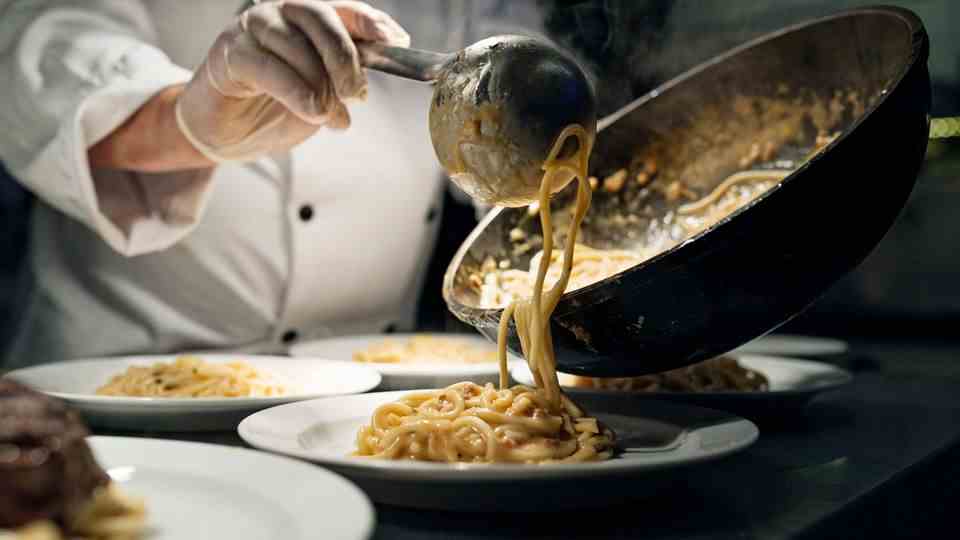hard cheese
How computer chips in cheese are supposed to ruin the business of Parmesan counterfeiters
Not every Parmesan is really a real Parmigiano (symbol image)
©Getty Images
The Parmigiano Reggiano makes an authentic pasta dish perfect. But the market is flooded with fake cheese. Now a tracking chip is supposed to be master.
It is the icing on the cake of Italian culinary art. Without Parmigiano Reggiano, often simply called Parmesan in Germany, many Italian delicacies just taste half as good. But the protected hard cheese is expensive. It’s no wonder that other cheeses are also sold under the well-known name in shops around the world. This is a thorn in the side of Italian cheese dairies. They want to protect the real Parmigiano with high-tech.
Because the name is protected as with champagne. The real Parmesan must be produced according to strict regulations, and it must also come from a defined region in north-west Italy between Bologna and Parma. Otherwise it’s a fake. The fake parmesans still sell well. According to “Yahoo”, almost 2.34 billion euros are sold every year with real Parmigiano, with fake Parmesan it is almost 2 billion euros – almost exactly the same.
With chips for tradition
The consortium of Parmigiano-Reggiano producers has had enough of that. Together with the technology experts Kaasmerk Matec and P-Chip they have now announced a cooperation. And jointly developed digital copy protection for the famous cheese. Since shortly after the turn of the millennium, the real cheeses have been provided with a serial number in order to be able to distinguish them from brazen fakes. The chip that has now been developed is intended to bring the idea into a more modern form.
To do this, a microtransponder is built into the casein label of the cheese. “Our invention combines the food-grade casein label with a P-chip transponder. This is a crypto-anchor that represents a digital twin for physical objects,” explains the consortium. Each cheese should be digitally identifiable and traceable. The customers don’t notice anything. “The scannable food tag is smaller than a grain of salt and extremely durable.” The idea is to give buyers the opportunity to check the cheese for authenticity – and thus make it more difficult for counterfeiters to sell the goods.
Test phase from autumn
It should start in the middle of the year. 100,000 cheeses are to be equipped with the tracking labels before the end of this year. If this test phase is successful, the technology should catch on quickly, the producers hope. The centuries-old tradition of cheese should be secured by the new technology.
Even the high-tech label cannot prevent another danger. As with the champagne equivalent, Crémant, many supermarkets also offer the equally delicious, but often slightly cheaper Grana Padano in addition to the more expensive originals. And that’s where the customers go.
Source: Parmigiano Reggiano Consortium, Yahoo

